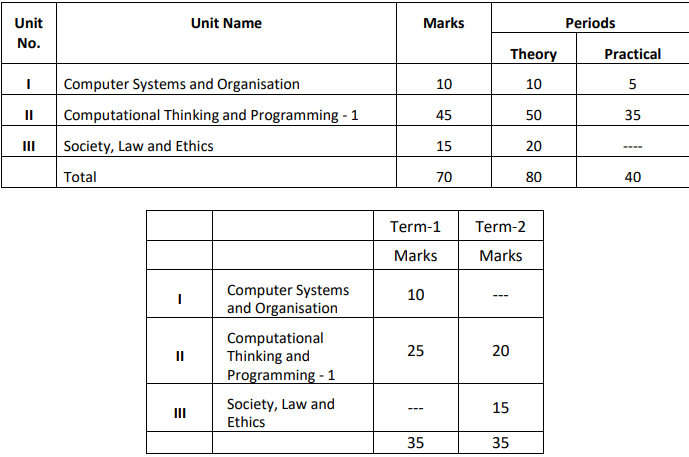Computer Science
CLASS – XII
2021-22
1. Learning Outcomes:
The students should be able to
a) develop basic computational thinking
b) explain and use data types
c) appreciate the notion of algorithm
d) develop a basic understanding of computer systems – architecture, operating system and cloud
computing
e) explain cyber ethics, cyber safety and cybercrime
f) Understand the value of technology in societies along with consideration of gender and disability
issues

TERM 2
Unit I: Computational Thinking and Programming – 2
Data Structure: Stack, operations on stack (push & pop), implementation of stack using list.
Unit II: Computer Networks
● Evolution of networking: introduction to computer networks, evolution of networking (ARPANET,
NSFNET, INTERNET)
● Data communication terminologies: concept of communication, components of data
communication (sender,receiver, message, communication media, protocols), measuring capacity
of communication media (bandwidth, data transfer rate), IP address, switching techniques (Circuit
switching, Packet switching)
● Transmission media: Wired communication media (Twisted pair cable, Co-axial cable, Fiber-optic
cable), Wireless media (Radio waves, Micro waves, Infrared waves
● Network devices (Modem, Ethernet card, RJ45, Repeater, Hub, Switch, Router, Gateway, WIFI card)
● Network topologies and Network types: types of networks (PAN, LAN, MAN, WAN), networking
topologies (Bus, Star, Tree)
● Network protocol: HTTP, FTP, PPP, SMTP, TCP/IP, POP3, HTTPS, TELNET, VoIP
● Introduction to web services: WWW, Hyper Text Markup Language (HTML), Extensible Markup
Language (XML), domain names, URL, website, web browser, web servers, web hosting
Unit III: Database Management
- Database concepts: introduction to database concepts and its need
- Relational data model: relation, attribute, tuple, domain, degree, cardinality, keys (candidate key,
primary key, alternate key, foreign key) - Structured Query Language: introduction, Data Definition Language and Data Manipulation
Language, data type (char(n), varchar(n), int, float, date), constraints (not null, unique, primary
key), create database, use database, show databases, drop database, show tables, create table,
describe table, alter table (add and remove an attribute, add and remove primary key), drop table,
insert, delete, select, operators (mathematical, relational and logical), aliasing, distinct clause,
where clause, in, between, order by, meaning of null, is null, is not null, like, update command,
delete command - Aggregate functions (max, min, avg, sum, count), group by, having clause, joins : Cartesian product
on two tables, equi-join and natural join - Interface of python with an SQL database: connecting SQL with Python, performing insert, update,
delete queries using cursor, display data by using fetchone(), fetchall(), rowcount, creating
database connectivity applications
Hope you found it useful,
FOLLOW US ON:
FACEBOOK , INSTAGRAM , YOUTUBE
FOR FULL PDF, CLICK THE BELOW LINK:
DOWNLOAD SYLLABUS PDF


